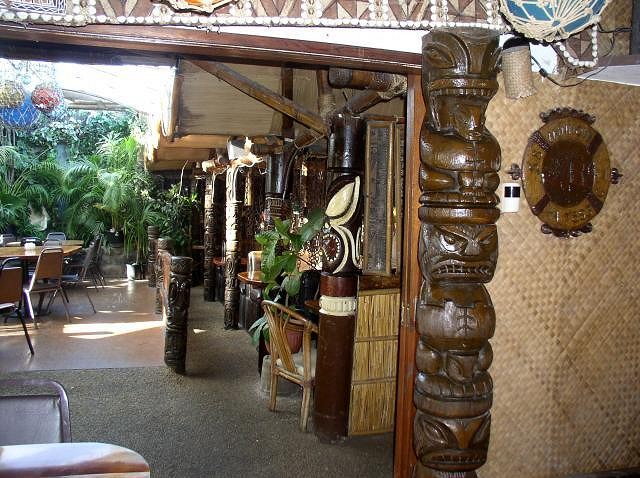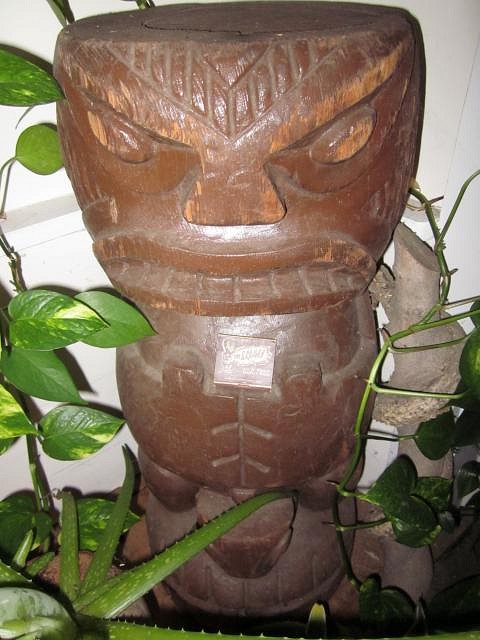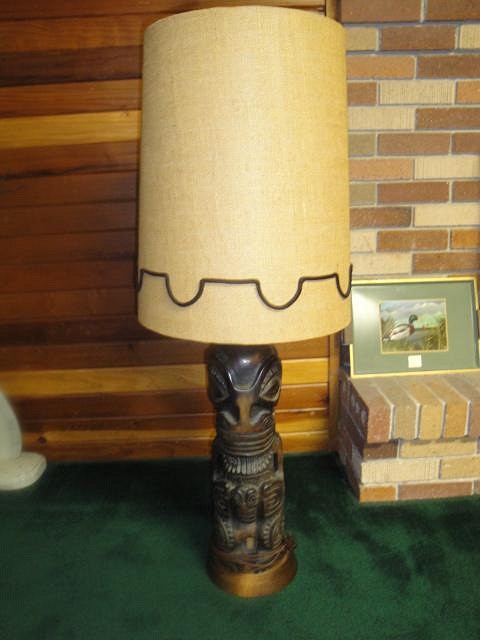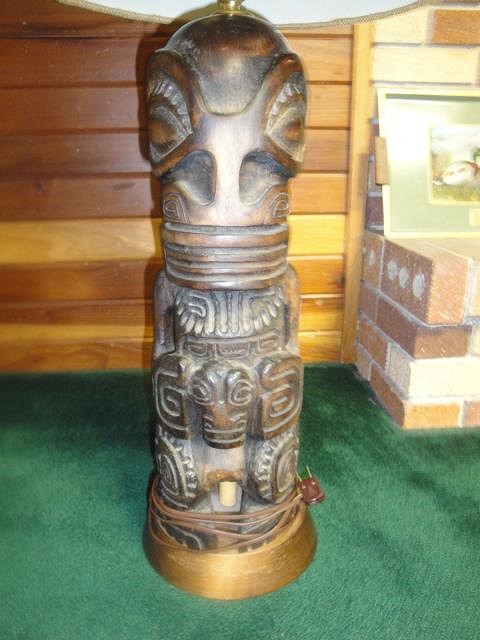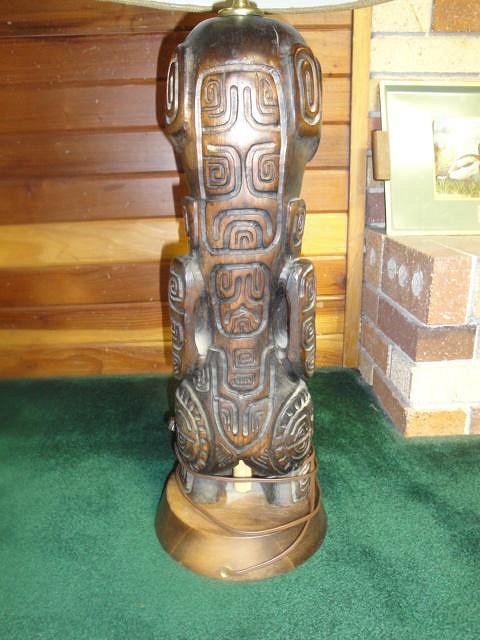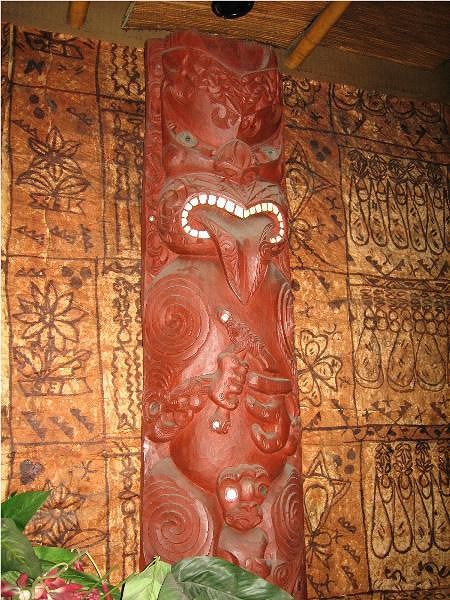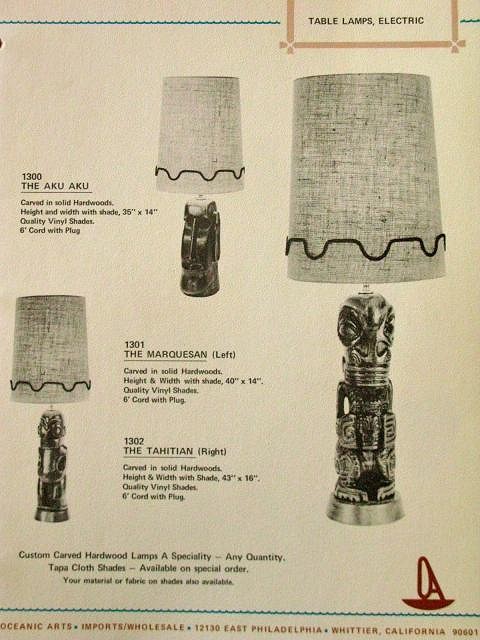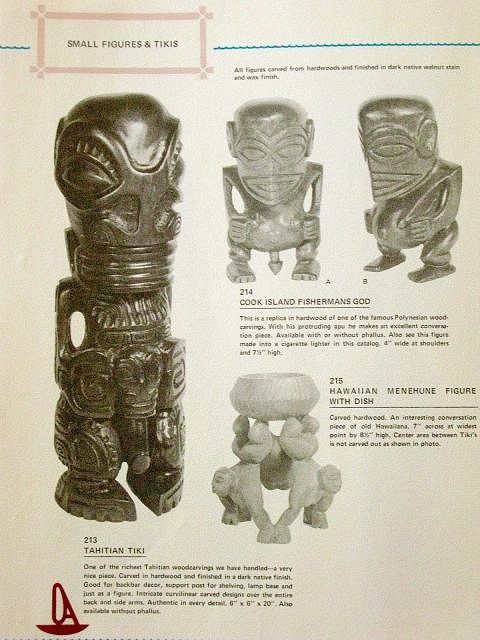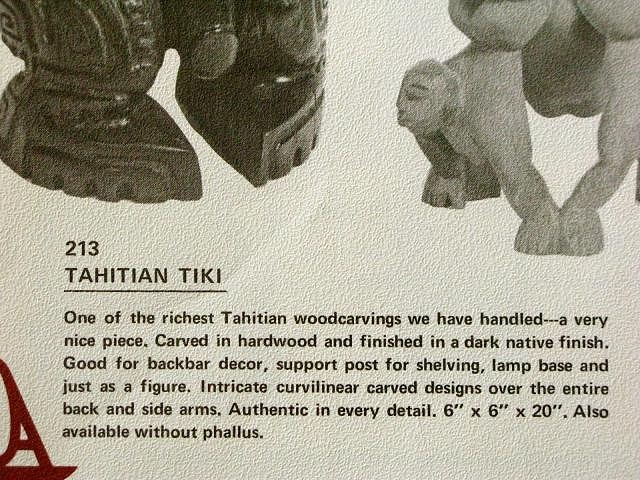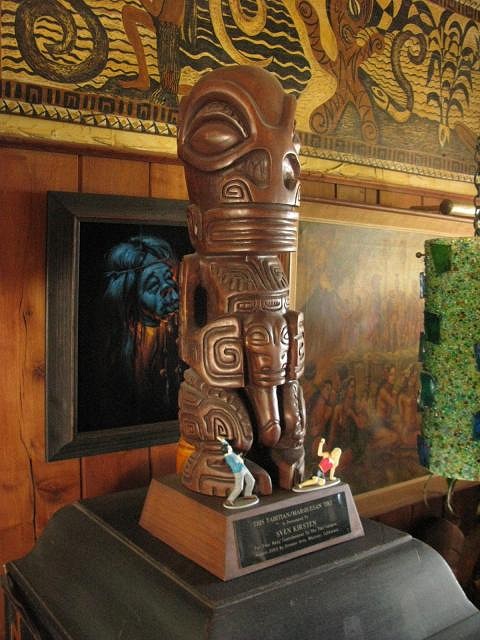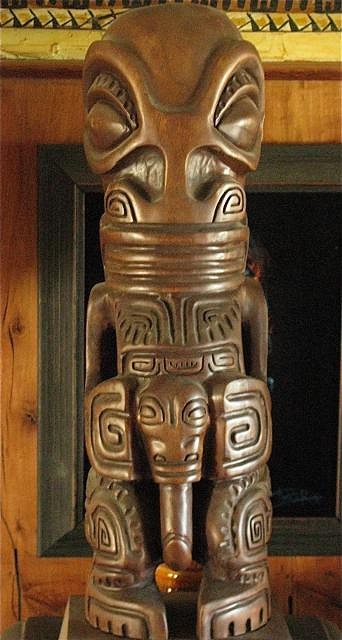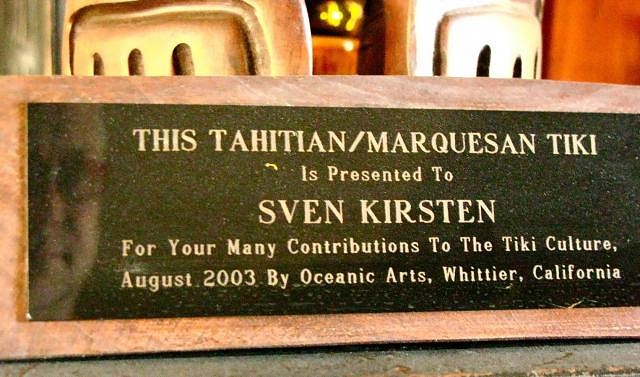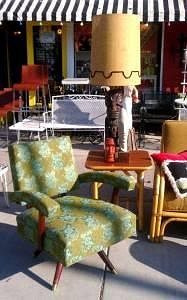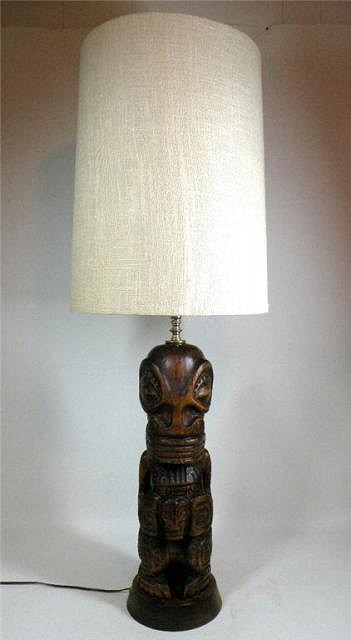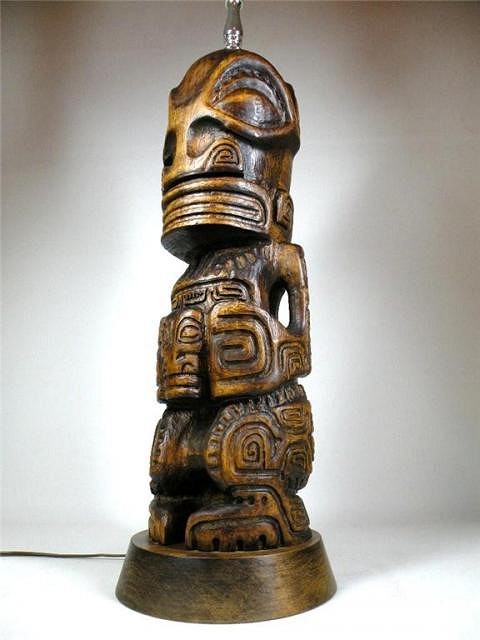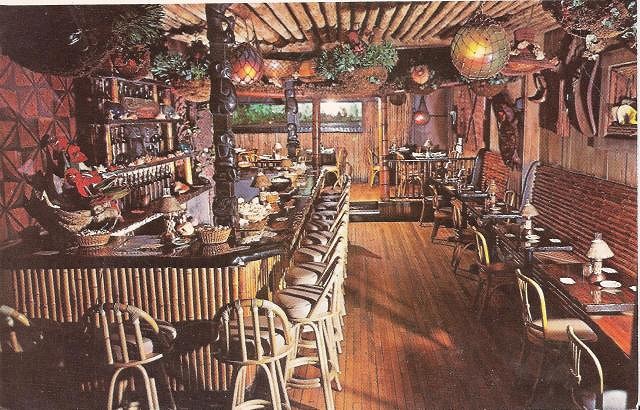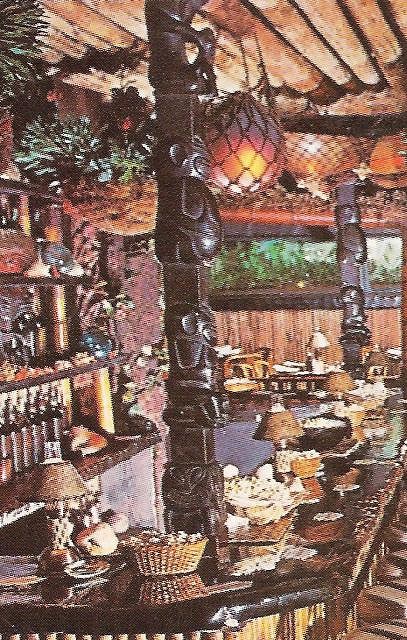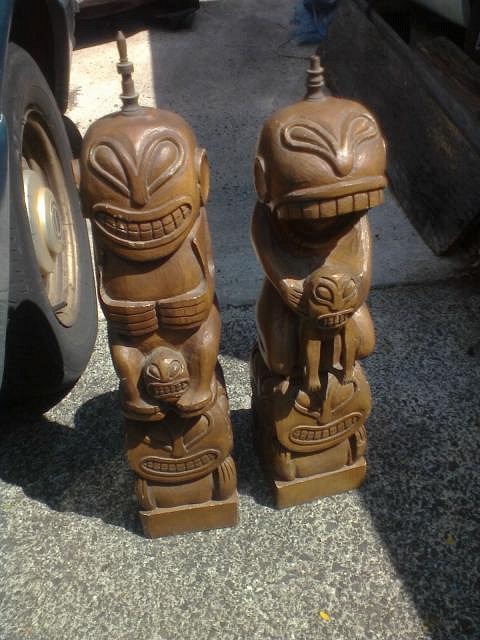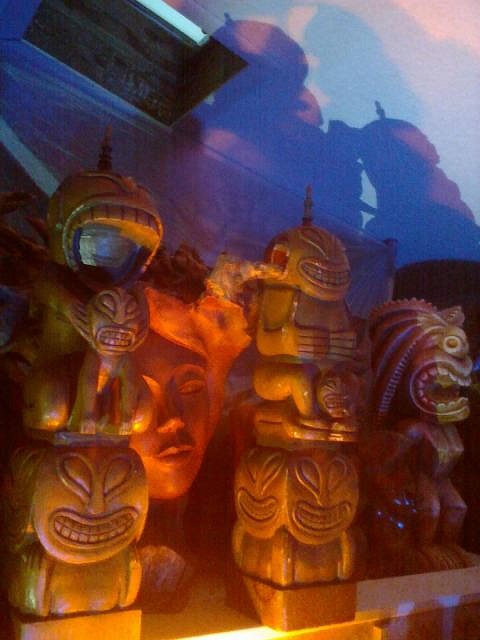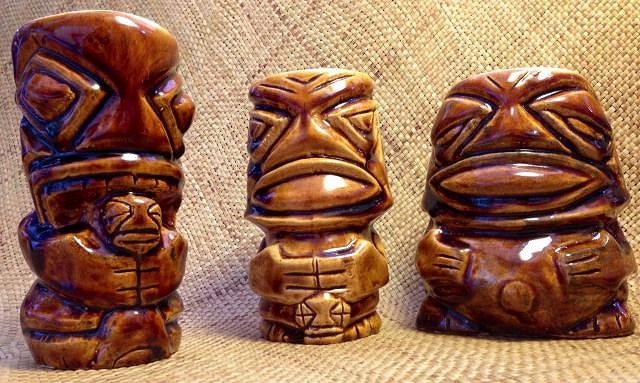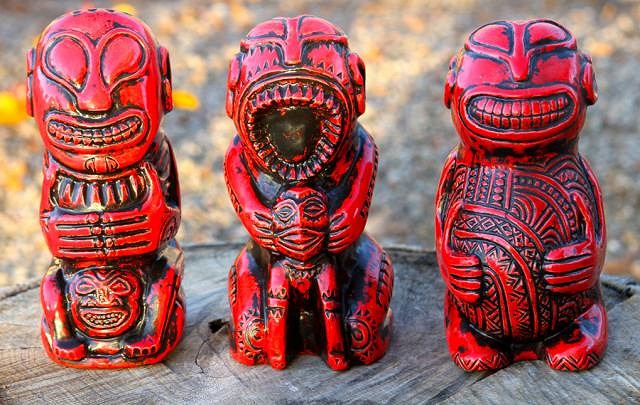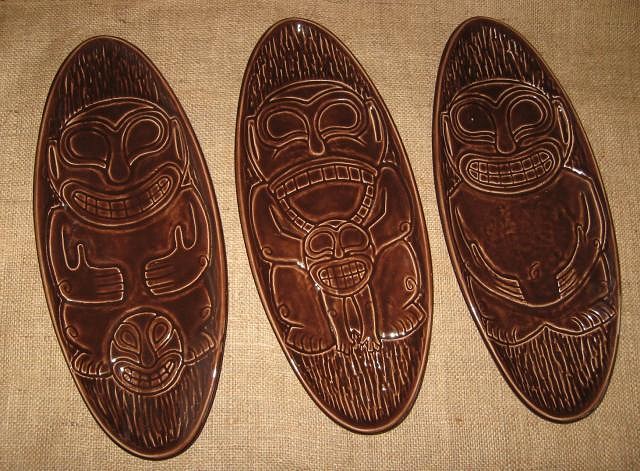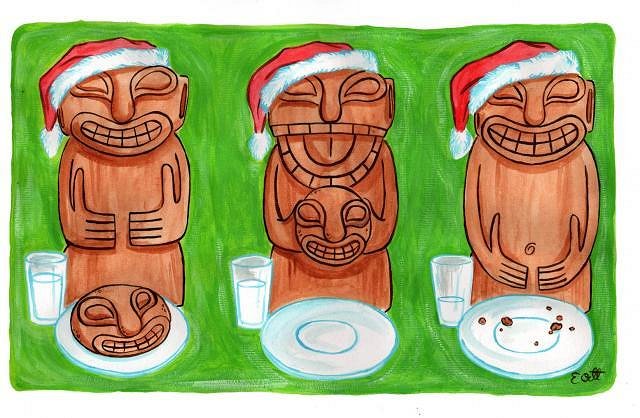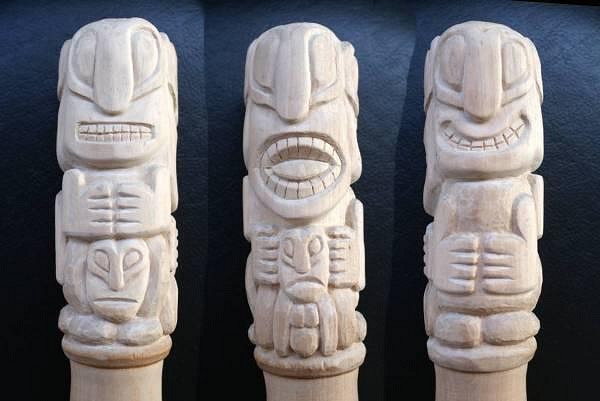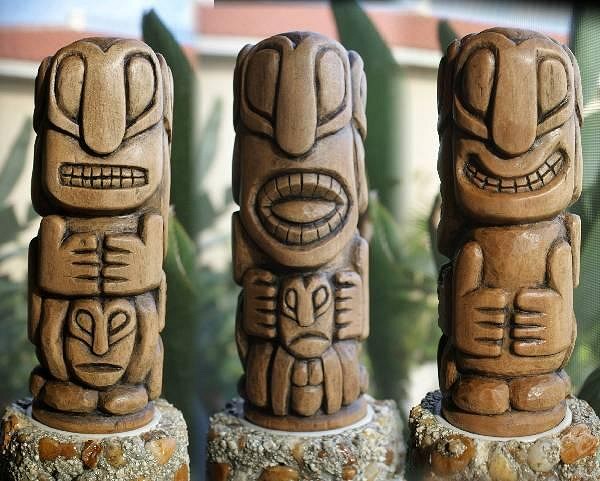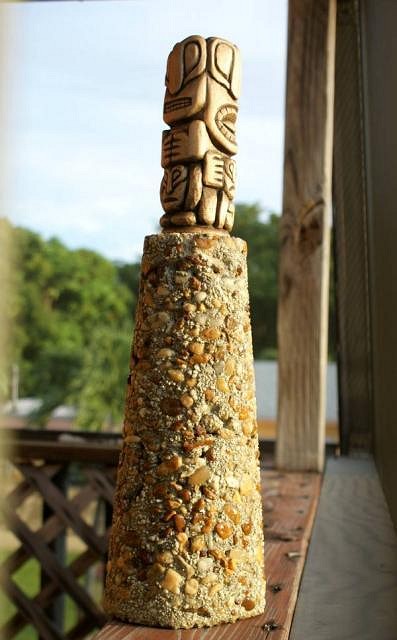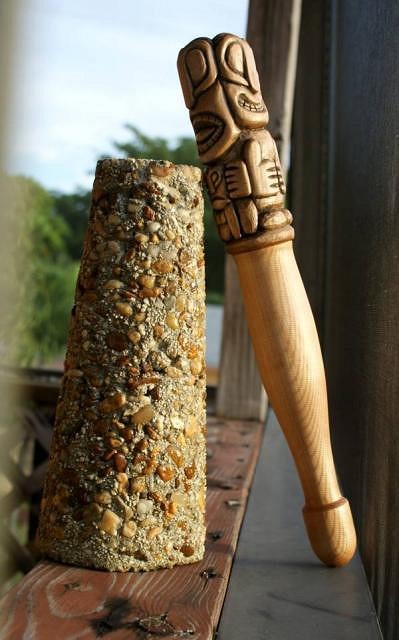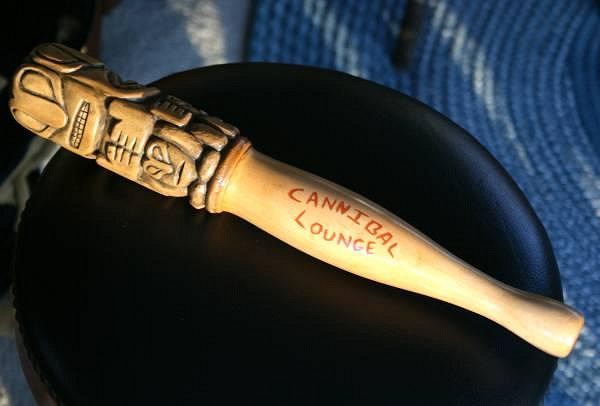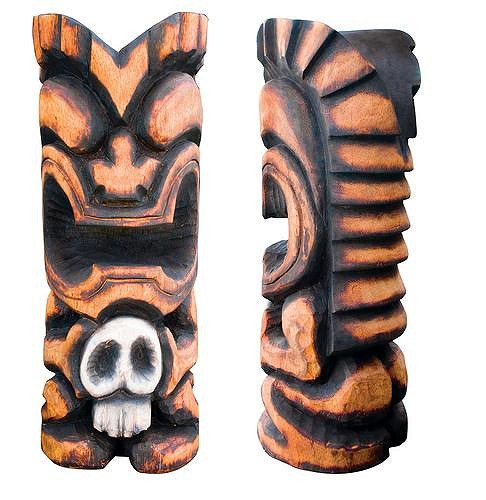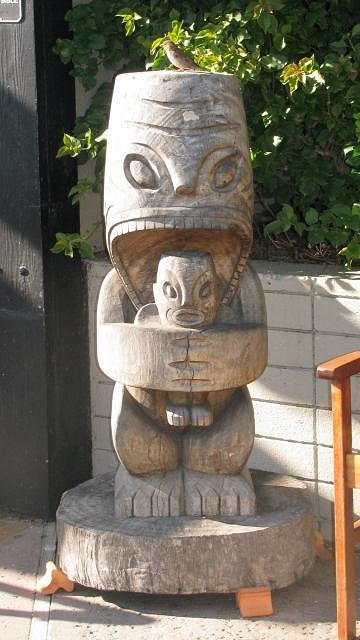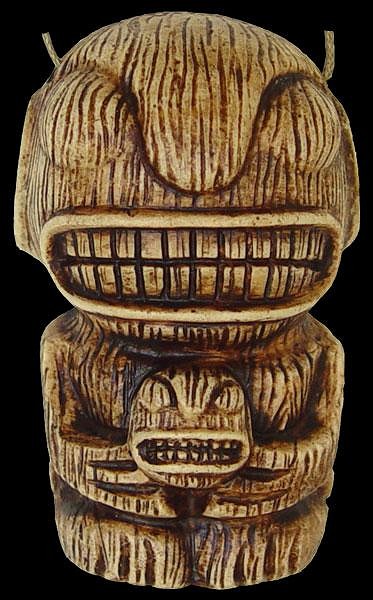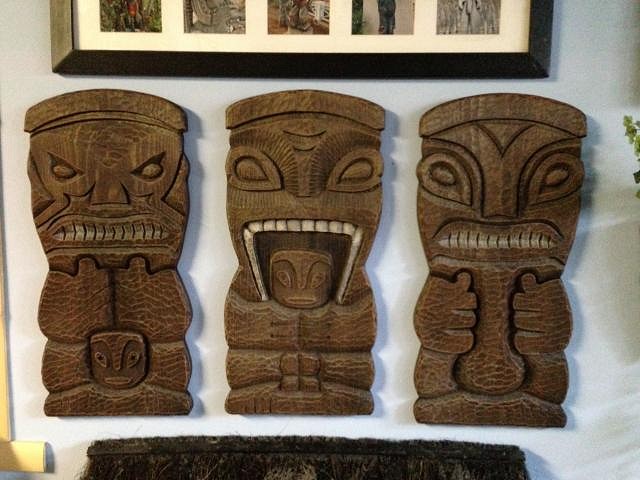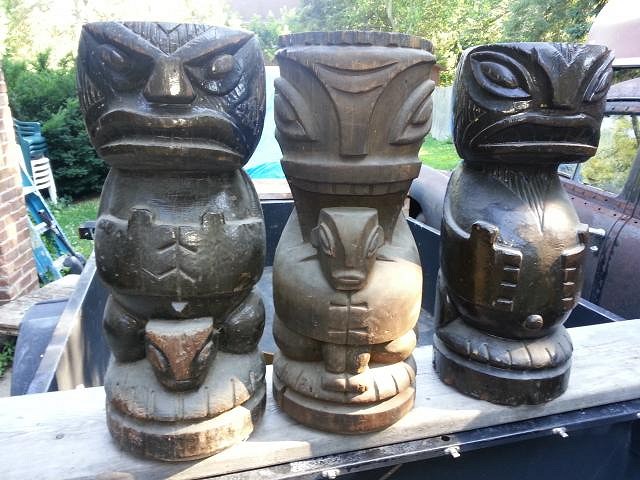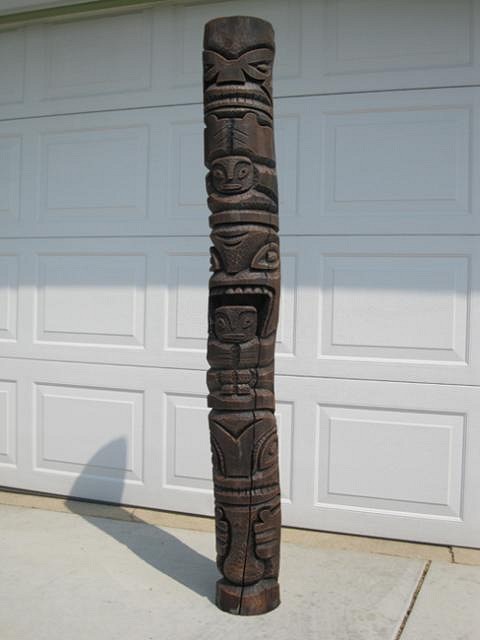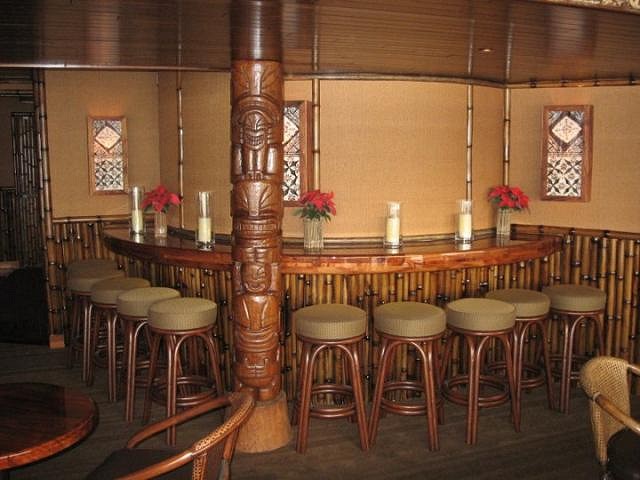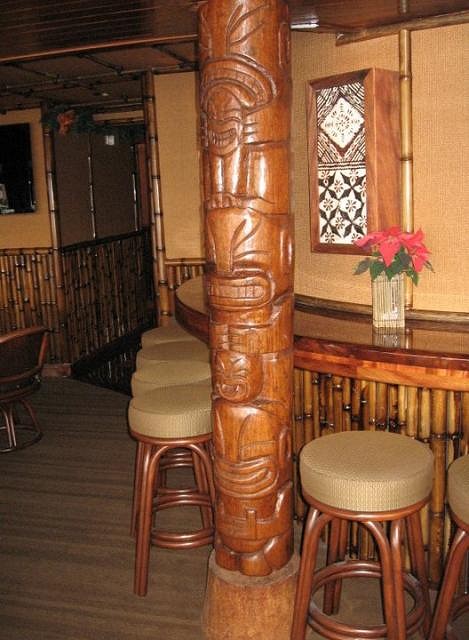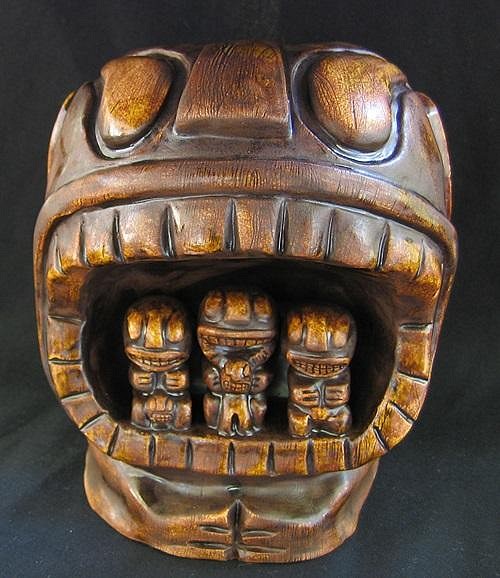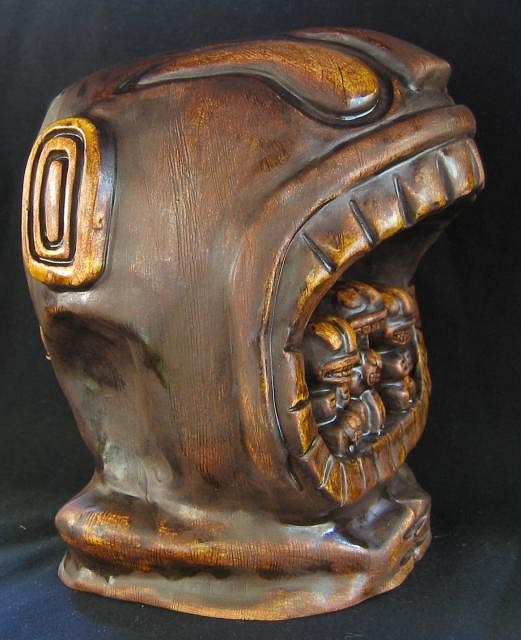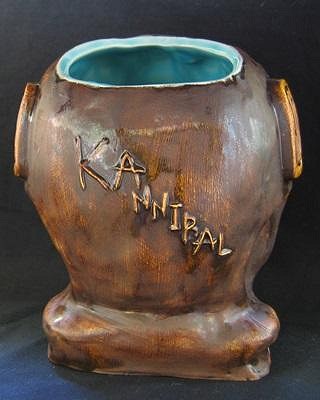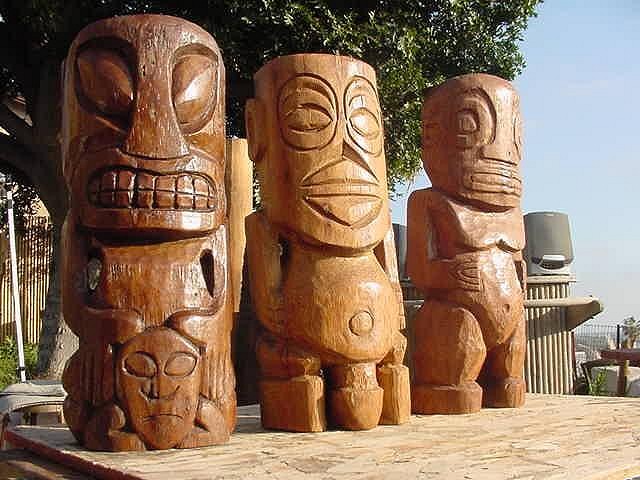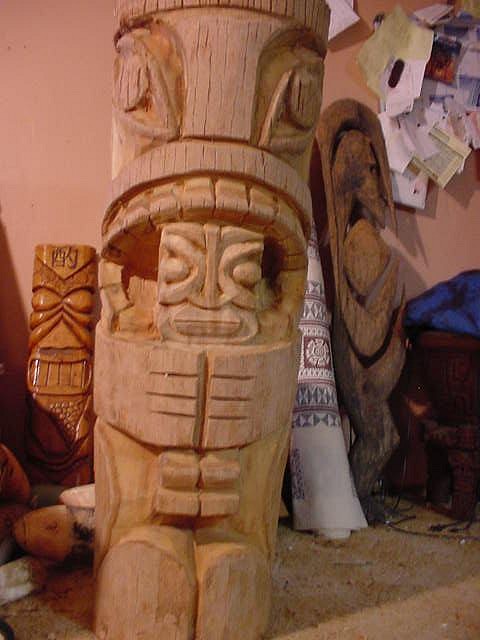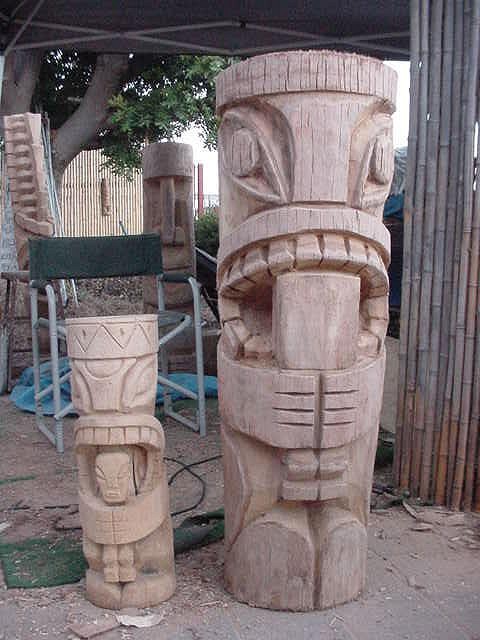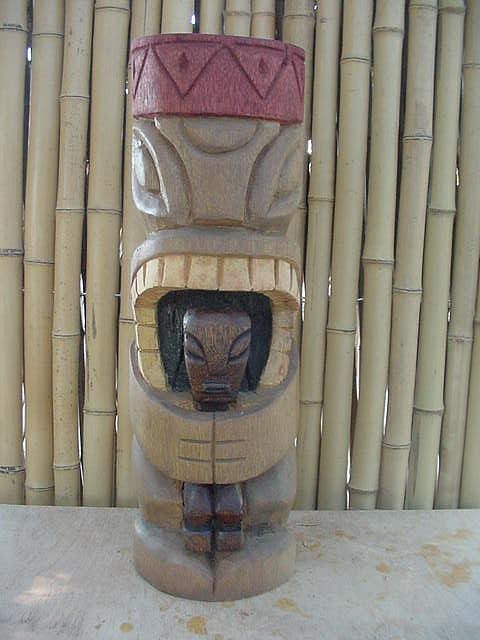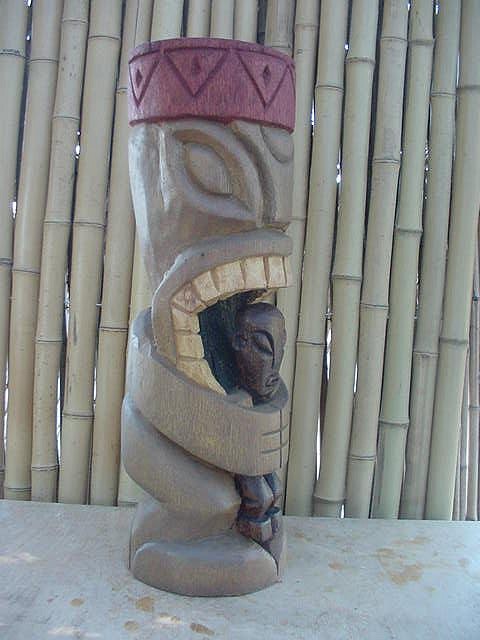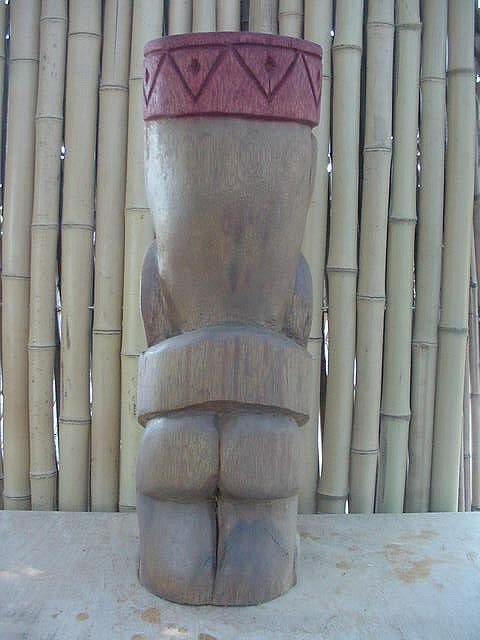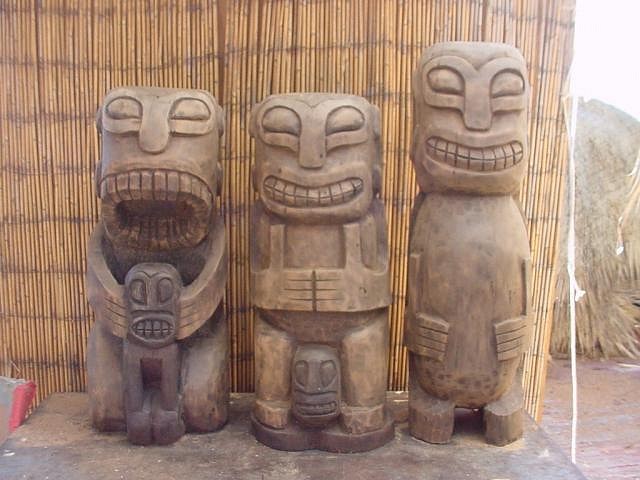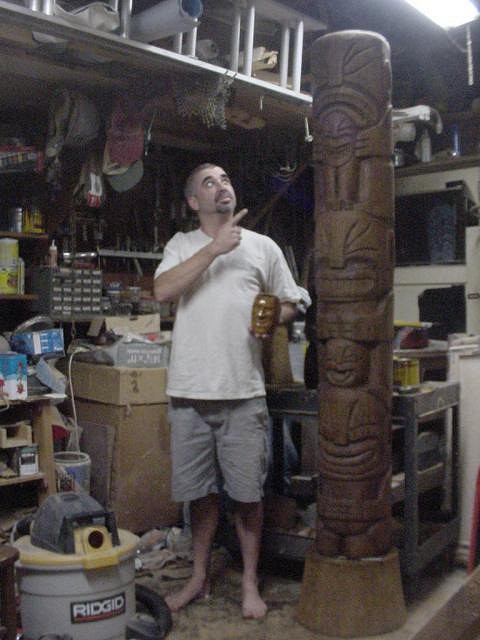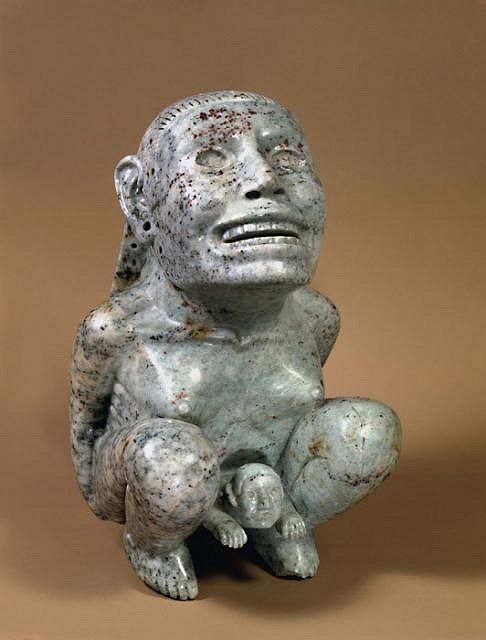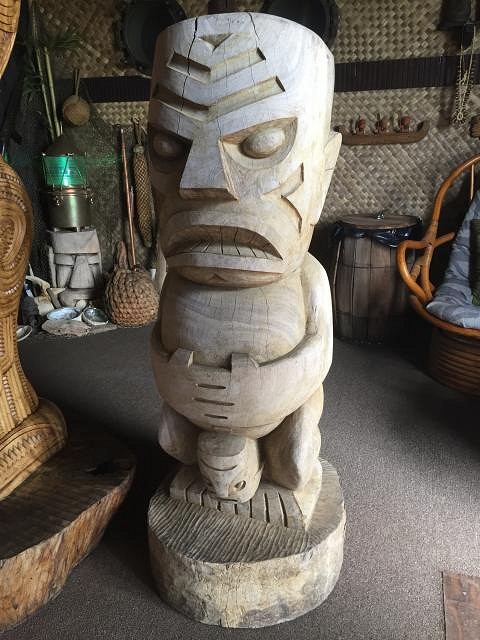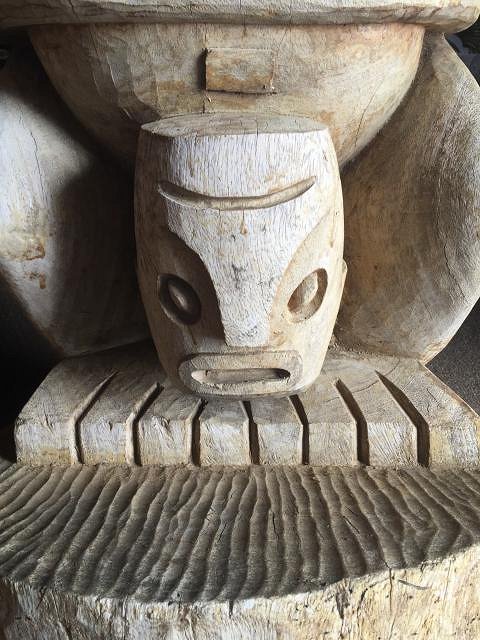Tiki Central / Collecting Tiki
A Collection of Cannibals
|
B
bigbrotiki
Posted
posted
on
Tue, Dec 6, 2011 9:38 AM
Just as a reminder: Since all the Steven Crane's Kon Tikis were modeled after his The Luau, many had these cannibal posts in them, too. This is how some of them ended up at La Mariana:
Just like the Hanalei did with the Luau, La Mariana took these over from the closed down Waikiki Kon Tiki. So maybe Tiki Nomad's post is from the Boston, Chicago or Cleveland Kon Tikis. |
|
T
Tikinomad
Posted
posted
on
Tue, Dec 6, 2011 11:57 AM
Thanks for all the info Big Bro...the Boston Kon Tiki would make more sense because where I picked them up from was only about 1 1/2 north of Bean Town... |
|
U
uglyguy
Posted
posted
on
Wed, Dec 7, 2011 6:31 PM
Super Score Tikinomad. A whole bunch of them. Plus you saved them from rotting away. I was happy to get one years ago when ebay was just getting rolling. Mine was out of San Diego. I put a Luau matchbook on him and tell everyone he's from there. Thanks for the input on the Witco mask. Here he is. Aloha....
|
|
PTD
Psycho Tiki D
Posted
posted
on
Sat, Jan 7, 2012 2:58 PM
Things turn up in the strangest places... Found today, asssuming this is a cannibal carving/lamp?
PTD |
|
1
1961surf
Posted
posted
on
Sat, Jan 7, 2012 4:03 PM
Killer lamp PTD ! |
|
B
bigbrotiki
Posted
posted
on
Sun, Jan 8, 2012 10:45 PM
The stuff you find, PTD! What you have there is an original, vintage O.A. lamp! I am not at home so I can't post the catalog page, I will though later. Congratulations! The "Youngen between the legs" does not necessarily denote a cannibal concept, in Maoridom it was quite common for fertility and other themes:
In the early 2000s, O.A. made 3 replicas of that Marquesan lamp Tiki which were given as Thank You trophies to Otto, Hanford and me for keeping Tiki Culture alive. Photos will folow. [ Edited by: bigbrotiki 2012-01-08 22:47 ] |
|
B
bigbrotiki
Posted
posted
on
Mon, Jan 9, 2012 2:11 PM
OK, here we go:
I have never seen one of those big O.A. table lamps in the wild - and with the original shade intact! The lamp is the same pattern than this freestanding O.A. Tiki:
Waitaminnit, something's missing on mine, you're saying now. Note the last line in the catalog caption:
And since the lamp was meant to sell for not only the rumpus room, but the whole house, I would assume it was never made WITH. My modern trophy version mentioned above came uncensored, of course:
Here is a full frontal view, without spectators:
And here the nice plaque that Bob and Leroy had made for each of us.
I feel that as a utilitarian object such as a lamp, this Tiki is even cooler. |
|
PTD
Psycho Tiki D
Posted
posted
on
Mon, Jan 9, 2012 3:22 PM
bigbro, Mahalo for posting the pictures from the OA sales brochure. Any idea what year these were carved? The tribute one looks great and I like the reflection of you on the plaque. This is where I found this...a consignment shop in Salt Lake City. http://saltlakecity.craigslist.org/fud/2786763358.html
PTD |
|
B
bigbrotiki
Posted
posted
on
Mon, Jan 9, 2012 3:38 PM
Can't help you with the exact age, we would have to ask them. The catalog came out in 1970, it was their first real collection of all their offerings. During the heyday of Tiki they were just too busy to make one, they went from job to job. The plug looks quite old, how does the wiring look? I would guesstimate mid 60s to mid 70s. |
|
D
Dustycajun
Posted
posted
on
Mon, Jan 9, 2012 4:15 PM
PTD, Well that lamp has turned into quite an extraordinary find, my friend. Nicely done. Were you on holiday in Salt Lake City? DC |
|
PTD
Psycho Tiki D
Posted
posted
on
Mon, Jan 9, 2012 4:46 PM
bigbro, Wiring is in excellent shape and the lamp works extrememly well. I would date the wiring to the timeframe you indicated, no earlier. dusty, I wish. I am here due to a very severe ill family member, which seems to be most of my reasons to travel to Salt Lake. My father has been diagnosed with Mesothelioma and it has spread and he is in stage 4 right now. Good diversion to otherwise bleak days...he came with me to buy it though. Now I just have to get it home! PTD |
|
BPB
Bay Park Buzzy
Posted
posted
on
Mon, Jan 9, 2012 8:25 PM
This one went for about $350 a few years ago on ebay: Buzzy Out! |
|
D
Dustycajun
Posted
posted
on
Mon, Sep 17, 2012 9:15 PM
Time to bump this great Tiki-Kate thread. A color photo of the cannibal posts at the Chicago Don the Beachcomber.
DC |
|
HOK
HOUSE OF KU
Posted
posted
on
Thu, Apr 11, 2013 3:07 AM
Weekend Swap meet find..... A pair of Cannibal lamp bases....
Oceanic Arts?
|
|
HT
Hale Tiki
Posted
posted
on
Thu, Apr 11, 2013 4:09 AM
NICE FIND KU! |
|
BK
Big Kahuna
Posted
posted
on
Thu, Apr 11, 2013 7:19 AM
WOW! Great score! |
|
R
ron-tiki
Posted
posted
on
Thu, Apr 11, 2013 10:16 AM
I miss TIKI KATE !!! |
|
S
SandraDee
Posted
posted
on
Thu, Apr 11, 2013 10:28 AM
House of Ku for the win! Great find my friend!! |
|
K
kiara
Posted
posted
on
Thu, Apr 11, 2013 12:33 PM
Here's a shot of some of my cannibles
|
|
B
bigbrotiki
Posted
posted
on
Thu, Apr 11, 2013 2:16 PM
These are sooooo rare. I don't think OA ever made these, but then who did? Maybe they stood around at some of the early Don The Beachcomber franchises back in the day.... |
|
BPB
Bay Park Buzzy
Posted
posted
on
Thu, Apr 11, 2013 3:46 PM
I've had this theory swimming in my head after I checked out Kate's tikis and was wondering about the 1923 date on them. Because, it seemed real early for tourist pieces, (which these obviously were) when most other islands' prevalent and recognizable tourist/trade produced examples seem to have come after World War II(except maybe Maori?)... So my final hypothesis is: That they were the earliest examples of Tahiti's locally produced, whimsical tourist oriented pieces based on original Polynesian motifs and themes. The true first wave of the PolyPop carver. I now present this hypothesis for peer review and debate. Thank you for your time. |
|
B
bigbrotiki
Posted
posted
on
Thu, Apr 11, 2013 11:26 PM
I think your theory has a lot of merit, Buzz-man. The motif of the cannibal Tiki was produced by some Marquesan carver for the Tahitian tourist trade. The interesting thing about THESE is that they were machine-made on a lathe, mine have the cross marks on the bottom. That seems more like a mainland US deal. Or other Asian wood-item manufacturing country? Maybe the lamps were re-imported to Tahiti? |
|
BPB
Bay Park Buzzy
Posted
posted
on
Fri, Apr 12, 2013 12:32 AM
The hardest part I guess I have with accepting your theory fully on the non Tahitian manufactured origin of these, is that for it to be true, then there couldn't have been a lathe in use in all of Tahiti. And that just seems too improbable to me. It would also have to entirely discredit Tahiti as having their own wood manufacturing economy altogether. My counter argument: Lathes, in one mechanical form or another, were already widely in use for hundreds of years. It wouldn't make sense for there not to be any lathes in use in Tahiti. If they were working with wood there, then they would have had access to those tools for a long time by then. My opinion on the execution of the carvings of these pieces on a lathe: My final thought: Thinking that the pieces were made by another wood-item manufacturing country solely based on the tool marks, seems to ignore many simpler and practical explanations. An open call to all of TC to help us finally get to the bottom of this. I've been thnking about this crap for years... Does anyone out there have one of these with the original manufacturer tags or price stickers? How about an old dated tourist photo with dozens of these lined up in Tahitian flea market. maybe an old ebay listing with a verified factula account of their origin. Any of those would help....Anyone? Buzzy Out! |
|
B
bigbrotiki
Posted
posted
on
Fri, Apr 12, 2013 12:04 PM
Buzzy, thanks for your "experienced wood worker" perspective! My sole thinking of "why not done in Tahiti if machine-carved" was based on the fact that the majority of Tikis for sale to tourists in Tahiti up until the 60s were hand-carved, so: Not hand-carved = Not carved in Tahiti. Which, as you pointed out, is way oversimplifying the matter. You are right, who says there weren't lathes used in Tahiti then. I still also want to know if the basic concept of the Cannibal carvings had roots in some traditional pieces that did not survive the missionaries, or if they were conceived as "whimsical" tourist carvings to begin with. |
|
S
Swanky
Posted
posted
on
Mon, Apr 15, 2013 9:57 AM
Except for the fact that they say "Bora Bora" on the bottom, not "Tahiti." |
|
AT

Alii Tiki
Posted
posted
on
Sat, May 4, 2013 11:48 PM
Tahitian Cannibal Trio by Bosko. |
|
E
ecubersax
Posted
posted
on
Sat, May 11, 2013 8:29 AM
I'm the proud guardian of Gecko's first set out of the mold Cannibals that MikeyTiki posted.
|
|
HT
Hale Tiki
Posted
posted
on
Sat, May 11, 2013 9:04 AM
GAHHHHHHHHHHHHHH!!!! |
|
H

hang10tiki
Posted
posted
on
Sat, May 11, 2013 6:27 PM
Wow |
|
G
GROG
Posted
posted
on
Sat, May 11, 2013 10:16 PM
Eric October (Tobunga) cannibal tiki art. ceramic platters Acrylic on paper [ Edited by: GROG 2013-05-11 22:17 ] |
|
G
GROG
Posted
posted
on
Tue, May 14, 2013 3:52 PM
Muddler made by Wiill Carve in Florida.
|
|
HT
Hale Tiki
Posted
posted
on
Wed, May 15, 2013 5:37 AM
Nice! |
|
C
creepykbear
Posted
posted
on
Mon, Jun 3, 2013 11:57 PM
A few more cannibals found while searching for inspiration for the current art swap Carving by David Lozeau
|
|
L
lunavideogames
Posted
posted
on
Mon, Jun 17, 2013 3:49 PM
My cannibals by Lake Surfer. He says that I am the only other owner of the complete collection besides the tiki bar Hale Pele. I like these guys! |
|
M
mastrmike
Posted
posted
on
Sat, Jul 13, 2013 3:33 PM
Hello all. This is my first tiki purchase. Can anyone help me identify these? They seem to be mismatched. |
|
LS
Lake Surfer
Posted
posted
on
Tue, Aug 20, 2013 9:35 PM
My homage to Steven Crane's Kon Tiki. Hand carved from White Pine. 5' H x 8" W.
|
|
RC
Ragbag Comics
Posted
posted
on
Wed, Aug 21, 2013 9:01 AM
This is fantastic! Yer one helluva talented hand... will you be at Fong Fest this year? -Pete |
|
BPB
Bay Park Buzzy
Posted
posted
on
Wed, Aug 21, 2013 4:46 PM
Here's an 8 foot one I carved for Billy's at the Beach in Newport It's wrapped around and hiding a 5" pipe
Buzzy Out! |
|
TK
Tiki Kaimuki
Posted
posted
on
Sun, Aug 25, 2013 10:44 AM
This is my latest large tiki mug called Kannibal. The "K" in Kannibal is in honor of Kate, the gal who started this thread and who also lit the fire for my quest to come up with my own rendition of these classic icons. Mahalo also to all of you who contributed to this thread, it has all been inspiring.
|
|
S
surfalaia
Posted
posted
on
Mon, Aug 26, 2013 5:17 AM
Nice Falin! Will we be seeing this gem in marketplace anytime soon? |
|
TK
Tiki Kaimuki
Posted
posted
on
Mon, Aug 26, 2013 8:09 AM
Mahalo. The five first batch artist proofs all sold at Tiki Oasis. I'm making the regular run, but it will be a while. |
|
H

hang10tiki
Posted
posted
on
Mon, Aug 26, 2013 3:00 PM
Saw them at Oasis Lake and Buzz- yours kicks ars Jon Worst sound ever, slurp of an empty tiki mug through my straw!!! [ Edited by: hang10tiki 2013-08-26 15:01 ] |
|
B
BG_Reynolds
Posted
posted
on
Mon, Aug 26, 2013 8:33 PM
And to think I was about to send you this link! Obsessing over the cannibal poles since I saw one in a picture from inside the Kon Tiki here in Portland. We do have the BIG individuals behind the bar at Hale pele protecting the rum, but a pole may be in order in the future. -Blair |
|
G
GROG
Posted
posted
on
Mon, Aug 26, 2013 8:46 PM
Very nice. |
|
BPB
Bay Park Buzzy
Posted
posted
on
Sun, Sep 8, 2013 11:07 PM
Here are a few more Cannibal variations that I've carved: Split log catcher on the left: A big fat stumpy one I sold before I got a finished picture of: He was a bigger version of another one that I previously did Small eater: The trio Scale picture of me with the Billy's pole cover Buzzy Out! |
|
H

hang10tiki
Posted
posted
on
Sat, Sep 14, 2013 5:41 AM
Cannibals with a buzz... |
|
K
Kalakala
Posted
posted
on
Sun, Sep 7, 2014 7:55 PM
I'm also a woodworker and I think that's a very plausible and probably correct explanation. But it doesn't necessarily end there. First of all, these were definitely hand-carved, no matter how the chuck marks got there. As an earlier poster pointed out: you simply can't do this sort of work on a lathe. And automated carving was nowhere near sophisticated enough to make even the latest of the vintage finds shown in this thread. It's entirely possible that the piece remained chucked up during the hand-carving process, simply for the sake of stability and ease of handling. Carvers also use a turntable or a "carver's vise" to spin a piece rather than to have to walk around it or turn it in hand as well as to hold it stationary at odd angles.
But what brought me to this thread was the possible symbolic origin of the trio. The first set I saw was the one Blair has at Hale Pele, back when it was Thatch. I was skeptical about the common interpretation of their meaning. What I saw the instant I looked at them was: Fecundity, Birth, Death—womb to tomb. The Earth Mother births us and consumes us. At least that's the way a lot of pre-technological societies saw it. Apparently some of the reproductions appear to have the large figure straddling the smaller one, but are we sure that's not simply a misinterpretation on the part of the copyist, sort of like a 3D version of the old "Telephone" game, down through the years? The stone figure posted earlier that the gold Indy Jones figure was based on is the pre-Columbian "Dumbarton Oaks Birthing Figure". Cheers, all! What a fascinating thread!
|
|
E
ErichTroudt
Posted
posted
on
Wed, Apr 6, 2016 4:43 PM
Its old, Don't know who carved it. I bought it from a piece that originally came from Jungle & Sea Imports, so possibly it did too.
|

